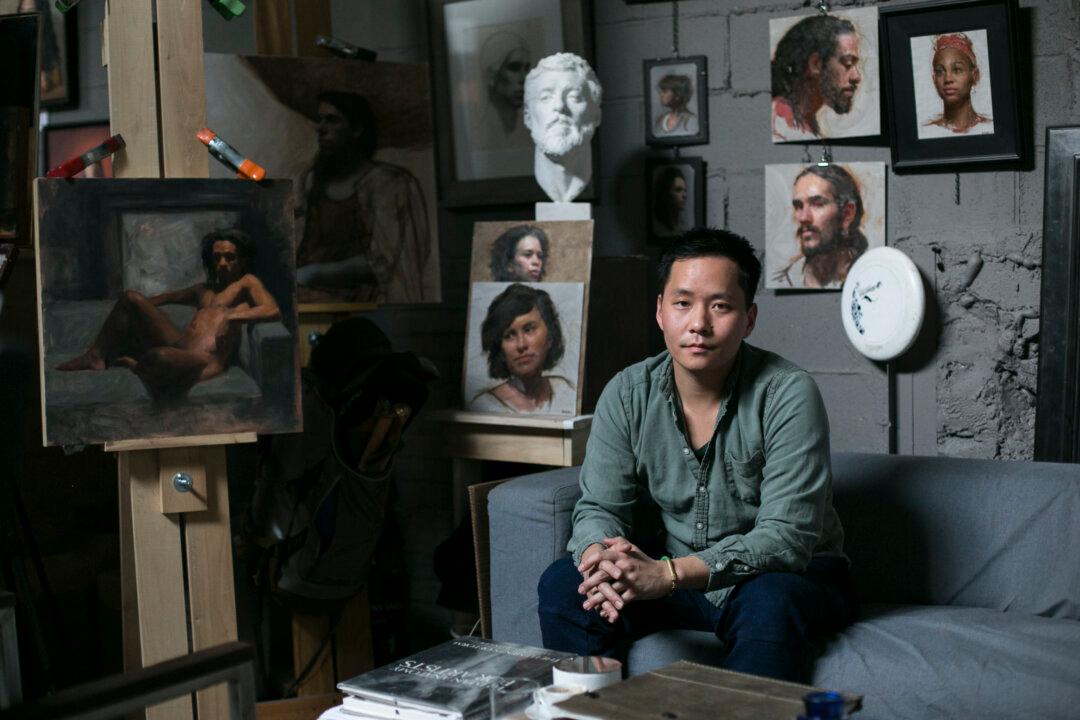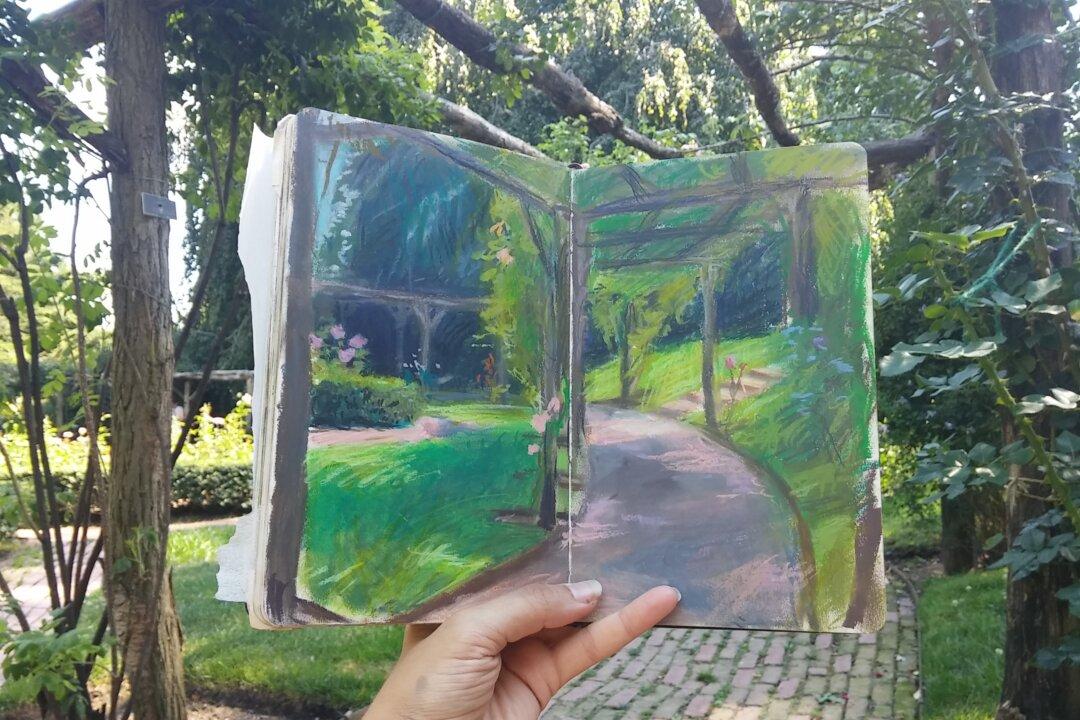NEW YORK—Patrick Byrnes shares many quiet hours in that enigmatic realm of the artist painting the model. Hours, weeks, or months, it does not matter how long he paints them, as long as he continues to strive to express the beauty of each person’s particularity. Through that process he hopes to create works that will feel compelling and universal.
That may seem paradoxical, yet Byrnes admits it’s a long endeavor to bring to light.
“I’m being patient,” he said softly, creating a sense of intimacy in his studio space at Grand Central Atelier, which is partitioned by thin grey walls that don’t reach the ceiling. “It’s so fulfilling to be in front of the model, trying to get it right. … I think it is going to be a lifelong obsession,” he said.

Artist Patrick Byrnes at the Grand Central Atelier, where he paints and teaches, in Long Island City, New York, on March 4, 2016. Samira Bouaou/Epoch Times






